Key takeaways:
- The anti-death penalty movement emphasizes the intrinsic value of life and the dangers of wrongful convictions, highlighting the need for education and understanding of its flaws.
- Engaging with lawmakers through personal stories and consistent communication can significantly impact legislative perspectives and drive reform efforts.
- Building relationships with legislators requires active listening, finding common ground, and personalizing interactions to foster meaningful dialogue.
- Follow-up and maintaining connections are crucial for advocacy success, with gratitude and updates reinforcing relationships and keeping the momentum of conversations alive.
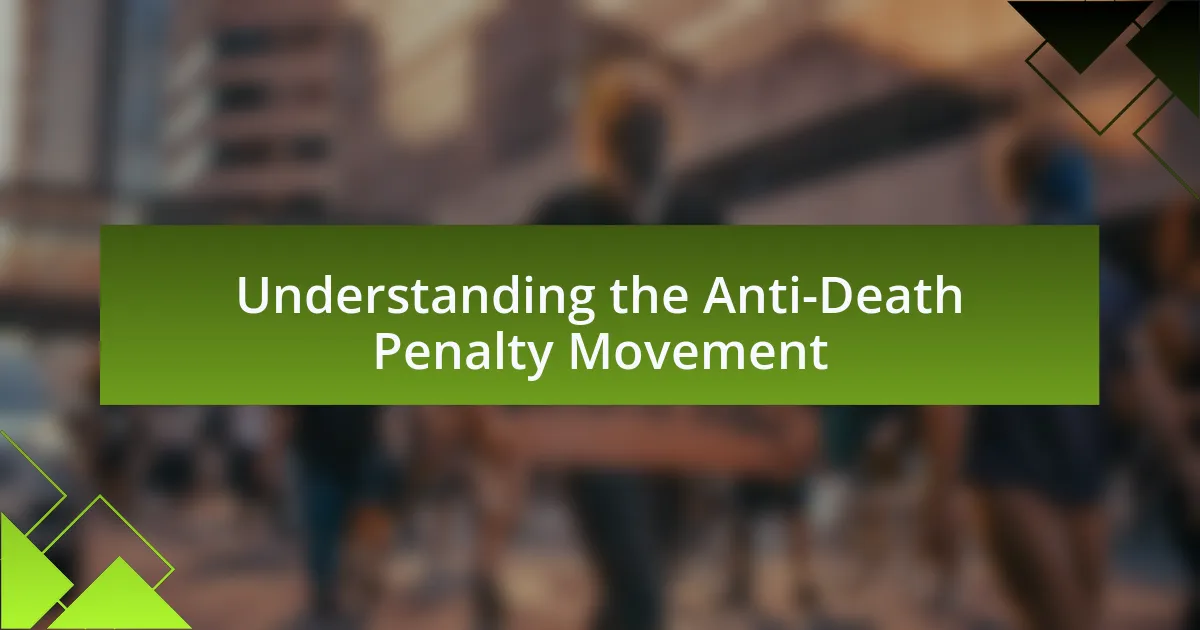
Understanding the Anti-Death Penalty Movement
The anti-death penalty movement is driven by the core belief that every life holds intrinsic value. I remember attending a rally where a former death row inmate shared his harrowing story of wrongful conviction. Listening to him, I couldn’t help but wonder: How many lives are affected by the flawed system that we often take for granted?
Beyond the ethical implications, there’s a deep emotional undercurrent in this movement that challenges the idea of retribution. I often find myself reflecting on the concept of forgiveness. Can we truly claim to be a just society if we remain steadfast in supporting a punishment that risks executing innocent people?
Education plays a crucial role in this movement, as advocates strive to break down misconceptions about crime and punishment. I vividly recall a documentary that highlighted the economic costs associated with capital punishment compared to life imprisonment. It left me pondering the question: why invest in a flawed system that doesn’t guarantee justice? Understanding these layers allows for a more profound discussion about why abolition is essential.
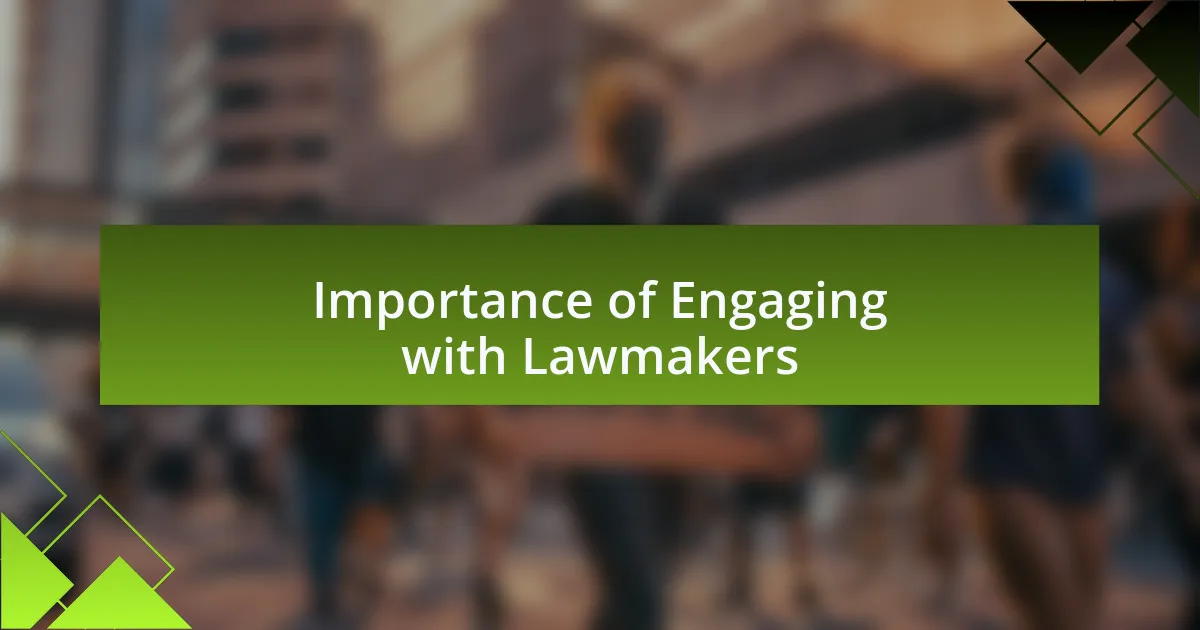
Importance of Engaging with Lawmakers
Engaging with lawmakers is critical because it fosters a dialogue about the values that underpin our justice system. I recall a time when I scheduled a meeting with my local representative, sharing stories from survivors affected by wrongful convictions. That experience reinforced my belief that personal narratives can profoundly impact legislative perspectives—who could ignore the voices of real people?
The emotional weight of these discussions cannot be understated. I’ve often left meetings with lawmakers feeling both hopeful and frustrated. It’s an ongoing challenge to remind them that their decisions affect real lives. How can we ensure that the humanity behind the statistics is not lost in the political process?
Moreover, involving lawmakers in this conversation is essential for enacting real change. There was a moment during a committee meeting when a legislator seemed genuinely moved by the statistics I presented on the racial disparities in capital punishment. When was the last time you felt your voice make a difference? In those moments, it’s evident that engaged citizens can shift the narrative and inspire action, making it vital for us to continue this effort.
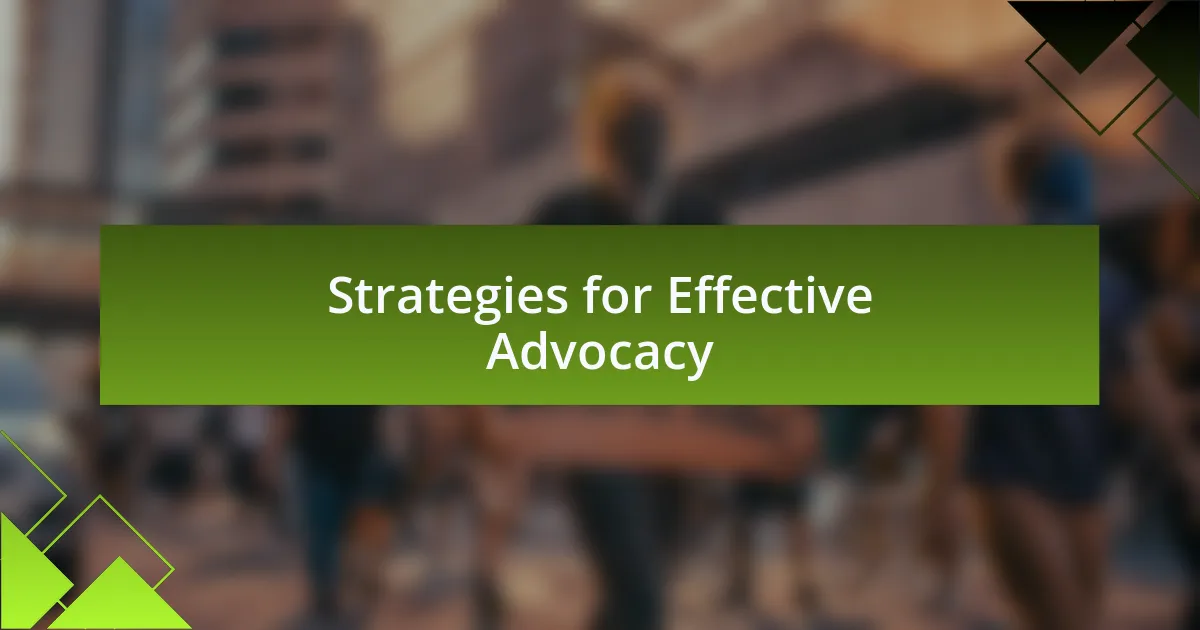
Strategies for Effective Advocacy
One effective strategy for advocacy that I’ve found incredibly impactful is to create coalitions with like-minded groups. During one campaign, I joined forces with local human rights organizations, amplifying our voices by presenting a united front. When we collectively marched to the capitol, the synergy of diverse stories and backgrounds was palpable—it’s amazing how a shared purpose can elevate the urgency of our message.
Another approach involves crafting tailored messages for legislators, addressing their specific interests or concerns. I once tailored a letter to a lawmaker who was particularly focused on fiscal responsibility, highlighting the financial burdens that the death penalty imposes on the state. This tactic not only piqued their interest but also opened a door for further discussions—who wouldn’t want to save taxpayer dollars while also supporting a just and humane alternative?
Lastly, I’ve learned that persistence is key. After an initial meeting where my proposals seemed to fall flat, I followed up consistently with additional information and personal stories that illustrated the real-world implications of their decisions. It felt tedious at times, but perseverance paid off—eventually, that same lawmaker reached out for a deeper conversation about reform. Isn’t it fascinating how a committed effort can ultimately lead to breakthrough moments in advocacy?
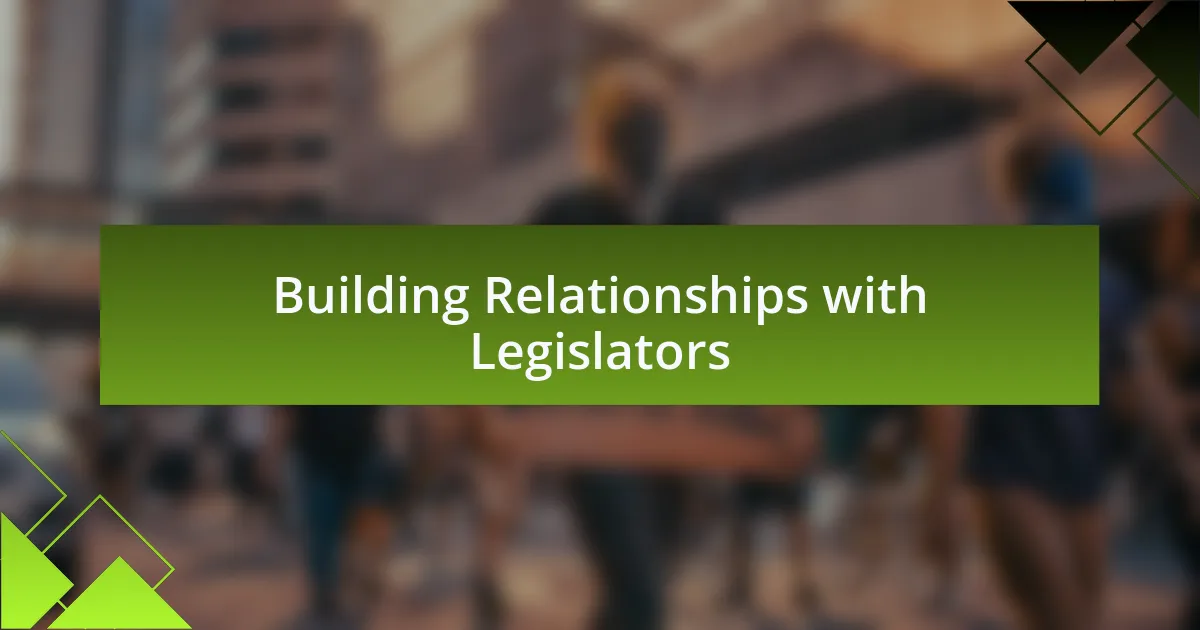
Building Relationships with Legislators
Building relationships with legislators requires more than just presenting facts; it often involves finding common ground and showing genuine interest in their priorities. I recall one particular meeting where I listened actively to a lawmaker’s concerns about community safety. By empathizing with their viewpoint and sharing stories of how the death penalty fails to support safer communities, I noticed a shift in their demeanor. Isn’t it incredible how understanding someone’s perspective can create a bridge for meaningful dialogue?
Consistently showing up is also crucial in relationship building. I made it a point to attend town hall meetings and local events where legislators would be present. Engaging in casual conversations, I shared my passion for anti-death penalty initiatives, while also discussing local issues that mattered to them. This consistent presence not only made me recognizable but also reinforced that I was not just a fleeting voice, but a committed advocate. Have you ever noticed how establishing that familiarity can break down barriers?
Moreover, personalizing interactions can significantly enhance rapport. During one discussion, I brought a heartfelt letter from a family impacted by wrongful convictions. I could see the emotions on the lawmaker’s face change as I read aloud parts of the letter. It reminded me of the real human stories behind the statistics. In those moments, advocacy transforms from abstract concepts into tangible realities that resonate on an emotional level; that connection is what I strive to forge with every legislator I engage with.
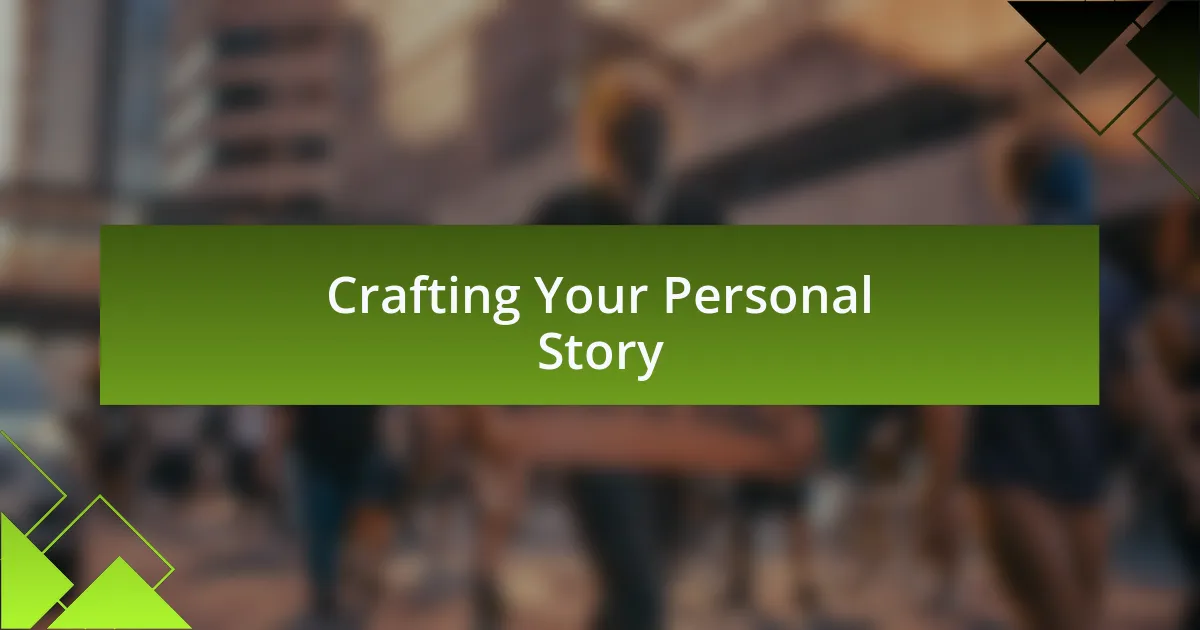
Crafting Your Personal Story
Crafting a personal story is about vulnerability and authenticity. I remember sharing the story of my close friend, who was wrongfully convicted and sentenced to death. As I recounted the details of their life, the dreams that were shattered, and the immense pain faced by their family, I could see empathy beginning to blossom in the eyes of the legislator. How powerful is it to turn statistics into stories that people can connect with on a personal level?
In my experience, the emotional weight of storytelling is an essential tool in advocacy. I once attended a legislative hearing where I shared not just facts, but my own journey—how I became an advocate after witnessing the unjust impact of the death penalty on individuals and society. When I included my own fears of a flawed justice system, it helped humanize the issue and made the lawmakers more receptive. Aren’t we all more inclined to listen when we hear someone’s heartfelt narrative?
Additionally, honing in on the shared values that unite us can transform a simple story into a compelling call to action. During one conversation, I emphasized how many of us value redemption and second chances. By weaving this thread through my personal experiences, I encouraged the lawmaker to see the issue of the death penalty through a different lens—one that aligns with our shared humanity. Have you ever thought about how your own story could ignite change in those who have the power to influence laws?
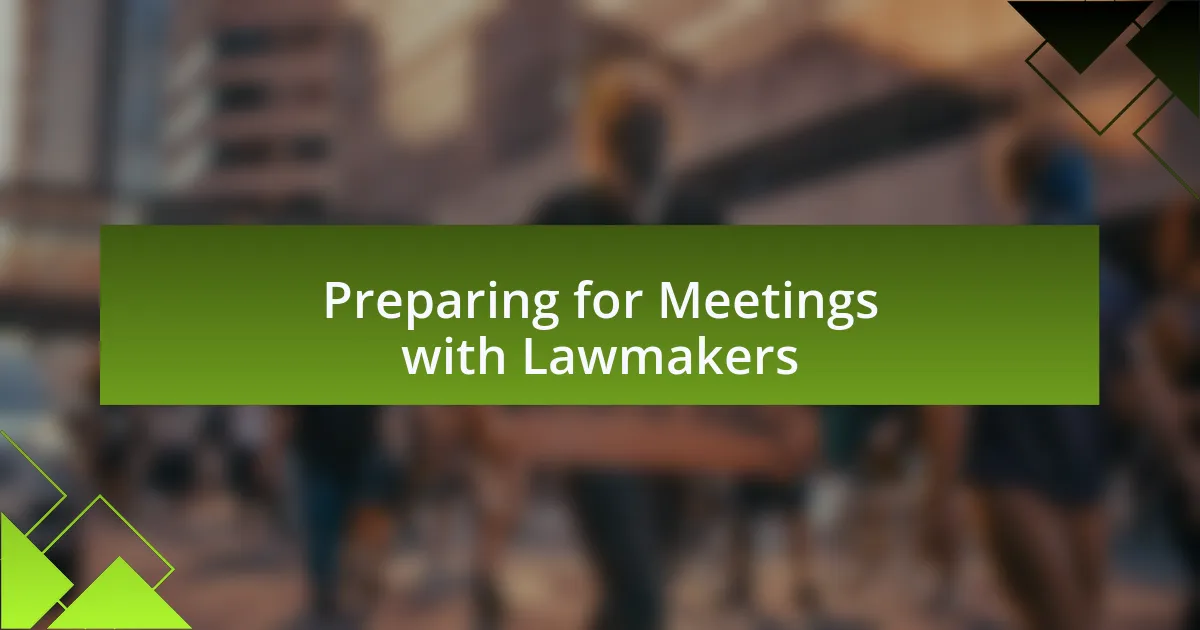
Preparing for Meetings with Lawmakers
When preparing for meetings with lawmakers, I find that thorough research is crucial. Knowing each legislator’s stance on the death penalty and their legislative history provides context for our conversation. In one instance, I discovered that a particularly influential lawmaker had a family member who was wrongfully convicted. This insight allowed me to tailor our discussion around the personal impact of wrongful executions, painting a vivid picture rather than leaning solely on statistics.
Another effective strategy is rehearsing key points before the meeting. I’ve learned to keep my message concise yet impactful. For example, during one meeting, I focused on just three crucial arguments against the death penalty: the risk of wrongful executions, the lack of deterrence, and its disproportionate impact on marginalized communities. Practicing these points ensured I communicated them clearly, ultimately making a stronger case.
I also recommend bringing visual aids or printed materials that encapsulate your main arguments. In my experience, I once carried a small booklet filled with stories of individuals affected by capital punishment. Not only did it serve as a reference during our conversation, but it also made the abstract issues more tangible. Have you ever considered how a well-crafted handout might resonate with lawmakers and reinforce your message during a crucial meeting?
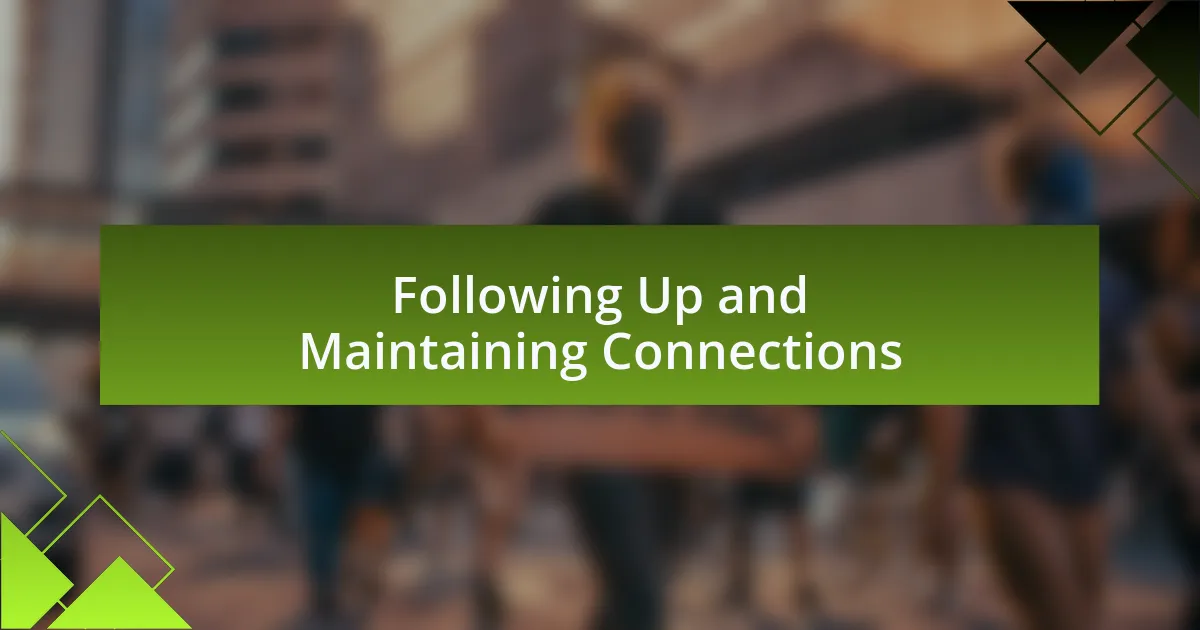
Following Up and Maintaining Connections
After the initial meeting, I make it a point to follow up with a personal note or email thanking the lawmaker for their time. This simple gesture not only reinforces the connection but also shows that I value our conversation. I remember one time, after discussing potential reforms with a senator, I sent a handwritten thank-you card. To my surprise, it sparked a continued dialogue about the specific legislative changes we’d discussed. Have you ever considered how something as basic as gratitude can keep the momentum going?
Maintaining connections is about consistency. I try to provide updates on ongoing efforts or new developments related to the anti-death penalty movement. For instance, when a new report on wrongful convictions came out, I reached out to a few legislators I had met previously. Sharing relevant information reinforces that I see our relationship as a two-way street. Have you found ways to keep lawmakers informed about your advocacy efforts?
Engagement doesn’t always have to be formal; I also connect with lawmakers at public events or forums. I once bumped into a representative at a local community gathering, and it became an opportunity to casually reignite our discussions. This experience taught me that advocacy is more than just structured meetings; it often thrives in organic interactions. Have you taken advantage of informal moments to strengthen your relationship with lawmakers?